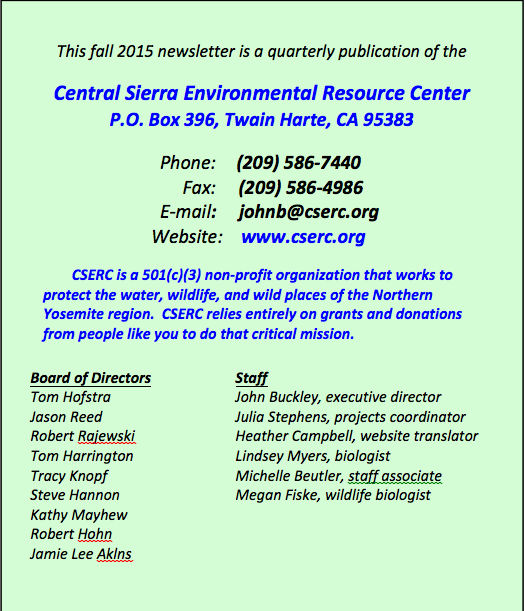 A century ago, trapping was the foremost threat to the Sierra Nevada red fox (SNRF). Demand for fox pelts led to a significant decline in fox numbers and pushed surviving foxes into the most remote habitat areas.
A century ago, trapping was the foremost threat to the Sierra Nevada red fox (SNRF). Demand for fox pelts led to a significant decline in fox numbers and pushed surviving foxes into the most remote habitat areas.
But over recent decades, other threats have affected the SNRF. In October, when the U.S. Fish and Wildlife Service made a finding that the Sonora Pass population of the fox deserved to be listed as a threatened species, the agency identified nine current threats to the fox. These include the growing severity and magnitude of wildfires, climate change, hunting and trapping, disease, competition and predation by coyotes, predation from domestic dogs, hybridization with nonnative foxes, death or injuries from vehicle strikes, and the species’ tiny size and isolation. CSERC staff has partnered for years with dedicated biologists from the U.S. Forest Service and Yosemite Park to search for these extremely rare foxes. Unlike the more common lower elevation foxes, Sierra Nevada red foxes live primarily in the highest, most challenging habitat of the region. When CSERC first discovered a new area with the fox a few years ago, those detections were at the uppermost crest of the range. Many of CSERC’s recent photo-survey efforts have focused on similar extremely remote habitat on crestline ridges or areas above tree line in Yosemite Park or in the Stanislaus National Forest. In October, after months of unsuccessful surveys, Lindsey and Megan of our staff shared their excitement when we got detections of Sierra Nevada red fox at two sites where the fox was not previously known to exist. Also in October, John and Lindsey traveled to Davis to coordinate with state, federal, and university scientists who are all striving to prevent the SNRF from fading forever from California’s mountainous regions. Their shared knowledge and support enhances CSERC’s ability to contribute to the overall research efforts.
One of the most critical concerns is that the general public has little awareness of the fox’s plight.
There was broad agreement at the SNRF workshop that it is important for conservation groups and agencies to broaden public awareness about the status of the fox. Drought-caused decline of the Sierra snow-pack is leading to a variety of additional pressures on the already-stressed SNRF population. CSERC is working to help raise awareness and to try to reduce threats such as snowmobile disturbance during the winter season and potential spread of disease by dogs.


